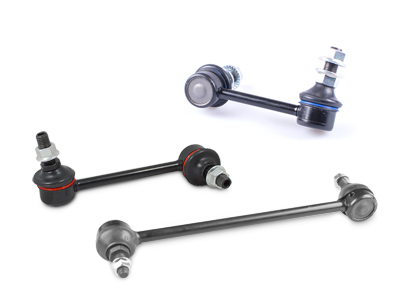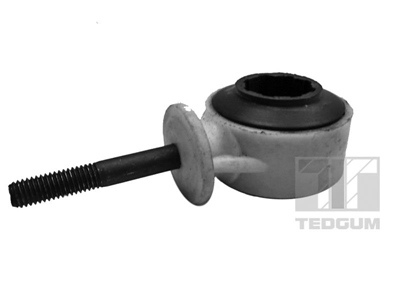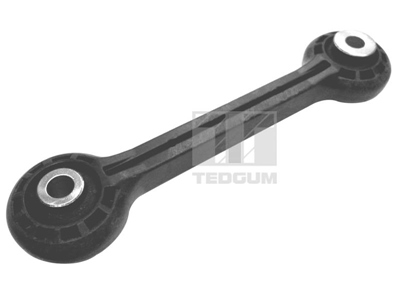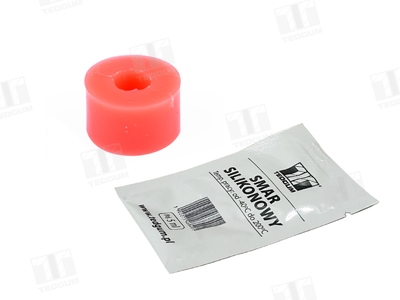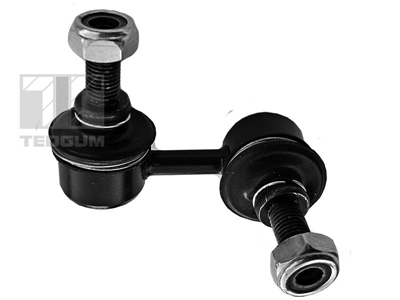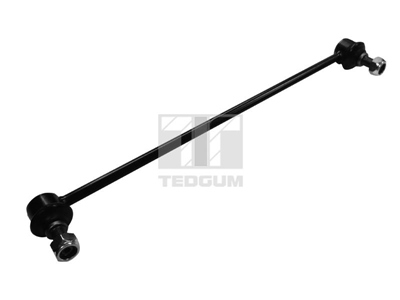What is a stabilizer link (Anti-roll bar link, Drop link)?
Its task is to connect the anti-roll bar to the suspension, and it is attached on each side to the control arms. Most often, its structure consists of two ball joints connected by a rod, however, it may also have other constructions in which, for example, ball joints are replaced with rubber bushings. In the case of the latter solution, rubber elements can be replaced with elements made of polyurethane to increase the strength and stiffness of the system.
Examples of “non-standard” drop links:
The length of the stabilizer links varies depending on the car’s suspension structure, and the rod connecting both ends may be practically invisible or even more than 30 cm long.
To what forces and damages is it exposed?
When moving along a straight road in good condition, the stabilizer links do not transmit any greater force. The same situation also occurs when you run into a transverse obstacle with both wheels (i.e. speed humps or bumps). In this case, the car’s suspension on both sides raises the same, and the anti-roll bar does not twist, but only rotates evenly. The situation is quite different when taking a turn, when one wheel hits a hole in the road, or when one wheel hits a protruding element while the other wheel is in the neutral position. When taking a turn, a tensile force acts on the anti-roll bar link in the outer wheel. In the same time, the link at the inner wheel is compressed. While these forces are not violent during turning, a sudden and strong impact may lead to quick damage to the link.
The forces to which the stabilizer links are exposed depends, among other things, on the thickness of the anti-roll bar itself. The larger its diameter, the greater the forces. If, for example, a car is tuned to reduce bend tilt, the drop links should also be adapted to withstand the greater forces, and otherwise they may be damaged much faster than would normally be the case.
Is it dangerous to damage the stabilizer link?
At the moment when the stabiliser links are worn, and they are damaged, it is a significant risk to the vehicle’s safety. A car with a damaged link may behave differently compared to an efficient system, especially when cornering. As a result of the centrifugal force and the lack of connection of the right and left wheel suspension systems, the wheel may lose traction from the inside of the bend, which in turn may lead to the vehicle falling outside, or the car overturning outside.
How to know the anti-roll bar links are damaged?
A failure of a drop link can most often manifest itself through two symptoms.
Deterioration in vehicle handling, which may be particularly noticeable when cornering. The perceptible greater lean of the car when cornering may give a signal to check the stabilizer system, including the links.
Suspension noise when cornering can be another symptom of damaged links. They may grind or click if damaged.

